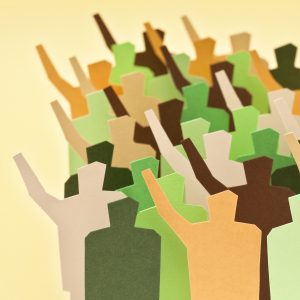Culture in crisis 3. Black Lives Matter – transforming inclusion and diversity
Jul 28th
As a society and in business we have taken steps towards an intent of equal opportunity. But the Black Lives Matter (BLM) movement that exploded after George Floyd’s killing in the US has penetrated our consciousness in unexpected ways, leading many to question themselves quite deeply. Organisations and individuals are confronting difficult truths.
One is that we measure progress on equality of opportunity by numbers: hitting diversity targets, counting Black, Asian and Minority Ethnic (BAME) people recruited. Some organisations use these numbers as a proxy for genuine engagement on inclusion and diversity. Capturing the wide range of diverse identities, culture, background and experience in a collective shorthand reveals a culture that still defines groups as ‘not white’.
The goal must be to find better published measures of progress that reflect genuine inclusion and harness the true value of diversity. BLM may be the signal to focus on this uplift. Repeated studies of high performing businesses confirm that those who routinely bring together different experiences and perspectives are more innovative and more successful. Instead of the blunt tool of representation, true diversity and inclusion listens, engages and values broad and varied thinking. These firms are in a stronger position to achieve results.
Working with frontline employees in two large public sector organisations, we heard that BAME employees don’t always feel safe. Safe from abuse of managerial power, safe from bullying, safe with the conditions and equipment required for their work, safe to speak out and name issues, safe to contribute in meetings where the majority are white, safe from many micro-aggressions, everyday slights and negative assumptions.
Yet the number of people comfortable talking about race has barely moved between 2015 and 2018, following the McGregor-Smith review of race in the workplace, from 37% to 38%. This is a clear challenge to leaders and managers. What isn’t discussed will be silent or brushed under the carpet, where it presents a real risk to a healthy organisation performing at its best.
Leaders with a focus on inclusion and diversity cannot accept an environment where some employees feel unsafe, or feel they need to keep their heads down. In a high-performing culture, those in the minority speak up, raise issues and share their experience, confident that their difference is understood, appreciated and valued. To harness all the diverse talents in the organisation, leaders must create a culture of openness and real inclusion.
The alternative is an environment where difference is ignored, attention to diversity is quantified and superficial, and innovation is suppressed as a result.
The risk is that inclusion and diversity may be considered less important as leaders and teams prioritise the most urgent and essential. It’s a natural response, but it would be a mistake. Diverse and inclusive organisations are better at harnessing wider talent and ideas, stronger on innovation and resilience. These are critical qualities for future success.
Where to start building a culture where BLM is part of an honest conversation about inclusion and diversity?
- Start the conversations. Create time and space to listen to the experience of difference. Talk about BLM. Ask: what can we do to support a strongly anti-racism culture in the organisation? A defining feature of the present global mass movement is the power to share learning and resources through social media. Increasingly that will be a model for businesses as well as for individuals.
- Lead action loud and clear from the top. Make changes happen when the need emerges from organisation-wide conversations. Shape a strong leadership narrative on what is actively being done to achieve an anti-racist culture.
- Uproot structural and systemic racism and discrimination. Commit to genuine inclusion and diversity that starts by creating conditions that support everyone to be safe, respected and valued, with their voices heard. Role-model it every day in every situation.
This is a collaboration between Stanton Marris and Nicholson McBride Change: Beatrice Hollyer, John Bruce-Jones, Jane Clarke, John Nicholson, Kirsty Hannah
www.nicholsonmcbridechange.com


